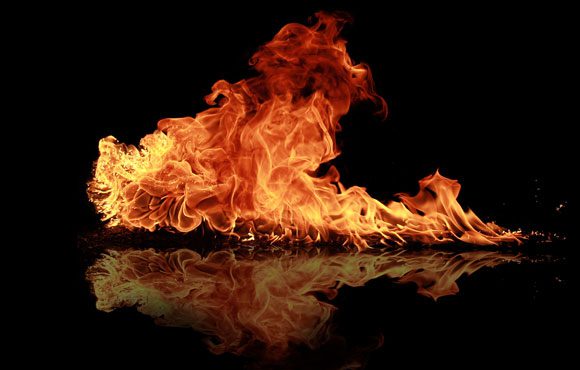Since time immemorial, fire has been a fundamental force, commanding both dread and awe in equal measure. Liquid fires hold a special place in the annals of history, serving as a potent symbol of transformation and power.
Liquid fires, ranging from the mysterious naphtha-based weapons of antiquity to the fuel in the engines that power modern civilization, have not only illuminated the dark but have also been the ignition point for countless changes in the human saga.
This article examines the use of fiery fluids and their role in advancing safety standards.
Ancient Flames: Greek Fire and Its Mysteries
Greek fire is often considered the “flamethrower” of the ancient world and is one of the most fascinating weapons in military history. Developed in the 7th century during the reign of Byzantine Emperor Constantine Pogonatus, its use was a game-changer in naval warfare.
Greek fire was capable of burning even on water and was used to devastating effect against the fleets of the Empire’s enemies, particularly during the Arab sieges of Constantinople. It was more than just a weapon; it was a psychological tool, instilling terror in those who witnessed its unquenchable flames consuming ships and men alike.
Even today, the United States Navy acknowledges the destructive potential of fire at sea, especially in the context of fuel and other flammable liquids. To counter this threat, the Navy employs advanced fire suppression systems, including the use of Aqueous Film Forming Foam (AFFF).
TruLaw states that such foam has been in use since the 1970s and was made in collaboration between the US Navy and 3M. No doubt, navies that fought Greece in the past would be highly envious of modern AFFF.
However, when you consider the cancerous side effects the foam can trigger and the numerous AFFF lawsuit cases, they might just pass on it.
As of October 2023, there were 5,938 pending lawsuits in the United States against manufacturers of this toxic foam. As of November 2023, a significant global settlement has been reached regarding municipal AFFF lawsuits, where 3M and Dupont have agreed to pay $10.3 billion to resolve these cases.
The Industrial Surge: Petroleum Fires
The discovery of petroleum radically altered the course of human history, becoming the lifeblood of an accelerating industrial age. This era was marked by a surge in technological innovation and economic growth. The early days of oil exploration and extraction were particularly fraught with peril.
The iconic image of a gusher—a pressurized oil well blowing a jet of petroleum into the air—was a precursor to a potential disaster. Without advanced control techniques, these events could easily ignite, leading to towering infernos that raged out of control.
Throughout the 20th century, several high-profile petroleum fires underscored the need for improved safety measures within the industry.
Incidents like the 1902 eruption of a well in Beaumont, Texas, which ignited a fire that burned for over a week, and the 1977 Piper Alpha disaster in the North Sea, which resulted in the death of 167 people, were grave illustrations of the hazards faced by workers and the environment.
More recent history has featured tragedies like the Deepwater Horizon oil rig incident, a catastrophic event that occurred on April 20, 2010. Owned by Transocean and operated by BP, the rig was drilling at the Macondo Prospect when a blowout occurred, leading to an explosion that killed 11 crewmen.
The explosion was so intense that the fireball was visible 40 miles away. Unable to be extinguished, the fire resulted in the rig sinking two days later, unleashing the largest marine oil spill (134 million gallons) in history.
To mitigate these risks, the entire oil industry has developed rigorous safety protocols, better construction materials for oil rigs and tanks, and sophisticated firefighting techniques. Much of today’s advancements in safety exist due to terrible disasters in the past.
These include innovations such as blowout preventers, AFFF-based fire extinguishing systems, automated shutoff valves, and flame-retardant materials that have become standard in the field.
What Lies in the Future?
The tightening of safety regulations in industries that handle combustible liquids is expected. This might include more stringent construction standards for storage containers, improved detection systems for early warning of fires, and comprehensive emergency response plans.
People are now more aware of how deadly the consequences of poor safety are. Though not a liquid fire, the massive Beirut explosion in 2020, which killed 218 people, was caused by poor storage conditions.
As the world shifts towards renewable energy sources, the role of liquid fuels may diminish, thereby reducing the incidence of liquid fires. This energy transition might not only impact the petroleum industry but also the chemical industry and any other sector reliant on flammable liquids.
Conclusion
The history of liquid fires is a testament to humanity’s resilience and ingenuity. From the ancient formula of Greek fire to the modern methods of controlling petroleum blazes, each incident has contributed to a collective learning experience.
These historical lessons have forged the comprehensive safety standards and emergency protocols that are in place today. Considering how devastating liquid fires can be, we need to continue focusing on improved safety standards.


